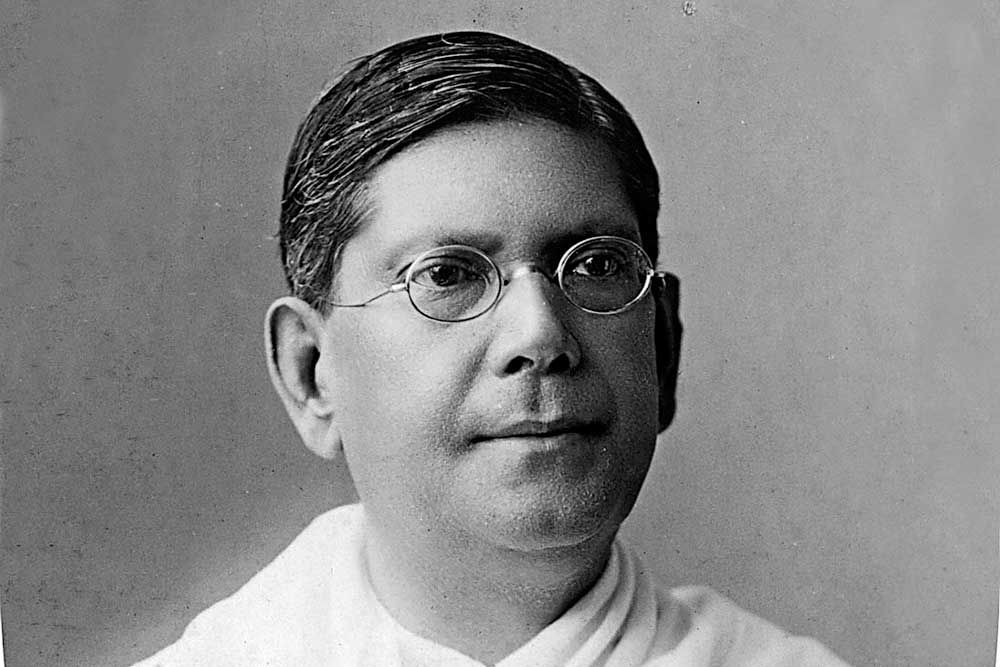Chittaranjan Das: ‘Apostle of Nationalism’

- Capt. Praveen Davar
Deshbandhu Chittaranjan Das, whose 99th death anniversary fell on June 16, 2024, was the President of Indian National Congress in 1922 when the Congress session was held in Gaya (Bihar). Born on November 5, 1870, at Calcutta (now Kolkata), he belonged to an upper middle-class family of Dacca district. Graduating from Presidency College, Calcutta Chittaranjan Das went to England, where he joined the Inner Temple and was called to the Bar in 1894. On return to Calcutta, he enrolled as a Barrister of the Calcutta High Court. His early political ideas were influenced by the great nationalists of Bengal, particularly Bankim Chandra and ‘Rashtraguru’ Surendernath Banerjee who was twice the President of INC, in 1895 and 1902.
The turning-point in his career came when he was called upon to appear on behalf of Aurobindo Ghose in the Alipore Bomb Case (1908). It was due to his brilliant handling of the case that Aurobindo was acquitted. This high-profile case brought Das to the forefront professionally and politically. Chittaranjan was the defence counsel in the Dacca Conspiracy Case (1910-11). He earned fame for his handling of both civil and criminal law.
It was, however, not before 1917 that Das came to the forefront of nationalist politics. In that year, he was invited to preside over the Bengal Provincial Conference held at Bhowanipore. His memorable presidential speech in Bengali was animated by lofty idealism and patriotic fire. Chittaranjan’s political career was brief but meteoric. In course of only eight years (1917-25), he rose to all-India fame by virtue of his ardent patriotism, sterling sincerity and oratorical power. His advent into politics in 1917 took place at a crucial moment. He supported the election of Mrs. Annie Besant as the first woman President of the INC (1917-18) and also took part in the agitation against the government policy on internment and deportation under the Defence of India Act. On the eve of the Calcutta Session (1917) of the Congress, he had been on a lecturing tour in Eastern Bengal, addressing large gathering on Self-Government.
In 1918, both at the Congress special session in Bombay and at the Annual Session in Delhi, Das opposed the scheme of Montagu-Chelmsford Reforms as wholly inadequate and disappointing. The demand for Provincial Autonomy was successfully propounded in the teeth of vehement opposition from Mrs. Besant and others. In 1919, Das went to the Punjab as a member of the non-official Jallianwala Bagh Enquiry Committee. The other members of the committee wereGandhiji and Pandit Motilal Nehru. At the Amritsar Congress (1919) presided by Motilal Nehru, he made the first advocacy of obstruction while opposing the idea of co-operation with the Government in the implementation of the 1919 Reforms.
In 1920 at a special session of the Congress held at Calcutta under the presidentship of Lala Lajpat Rai, Gandhiji announced his path- breaking programme of Non-Cooperation. Das sought some changes in it but in vain. He, however, had the support of BC Pal, MM Malaviya, Annie Besant. Three months later, the Congress met at Nagpur where he, however, accepted Gandhiji’s lead and came back to Calcutta to renounce his large practice at the Bar. The whole nation was deeply impressed to see this supreme act of self-sacrifice. Besides the Non-Cooperation Movement, the large-scale exodus of the Coolies from the Assam tea gardens and the strike of the Assam-Bengal railways employees engaged his attention in 1921.
With the suspension of the Non-Cooperative Movement, Deshbandhu endeavoured to give a new orientation to Indian politics through his Council-Entry programme, i.e. ‘Non-Cooperation from within the Councils’. He however met with vehement opposition from the Mahatma and the ‘No-changers’. At the Gaya Congress, C. Rajagopalachari led the Council-Entry opposition. His motion being lost, Deshbandhu resigned the presidentship. Thereafter, he organised the Swarajya Party within the Congress in collaboration with Pt. Motilal Nehru, the Ali brothers, Ajmal Khan, Vittihalbhai Patel (Sardar Patel’s elder brother) and others. It was initially known as the Congress-Swaraj-Khilafat Party. In spite of the bitter criticism launched by the ‘No-changers’, Jalpaiguri Conference was organised by the Swarajists in 1923. Through the effort of the Swarajists, Maulana Azad was elected President of the Congress Special Session at Delhi, where the programme of Council-Entry was approved. The programme was later confirmed at the Cocanada Session 1923 presided over by Maulana Mohammad Ali. Chittaranjan Das died too early when he was only 55 years old. Besides Gandhiji, his death came as a big blow to Motilal Nehru who was his closest comrade. Both were leading lawyers of the country who had given up their highly lucrative legal profession, property worth crores and other material comforts at the call of the Mahatma.
The intensity of Motilal Nehru’s shock on hearing the news of death of CR Das is described by the then 36-year-old Jawaharlal Nehru in his Autobiography: ‘A telegram came. It told us that Chittaranjan Das had died. For a long time, father sat still without a word, bowed down with grief. It was a cruel blow to him, and I had seldom seen him so affected. The one person who had grown to be a closer and dearer comrade than anyone else had suddenly gone and left him to shoulder the burden alone.’
Great as a jurist like his dearest friend from Allahabad, Chittaranjan Das was the greatest and most dynamic leader of Bengal of those times. The people of Bengal fondly remember him as an ‘Apostle of Nationalism’ who became an inspiration for the youth of Bengal, led by Subhas Chandra Bose and others like JM Sengupta.
(The writer is a columnist and ex. Secretary, AICC)







